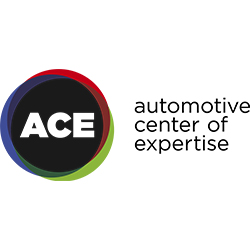Gebruikt bij post-bachelorcursus Using R for Data Analysis: "... verdiep je je in de programmeertaal R. Dit is een programmeertaal die reproduceerbaarheid van onderzoek en data-analyse verhoogt. R wordt tegenwoordig breed gebruikt binnen verschillende takken van de wetenschap en daarnaast door grote data gedreven bedrijven als Facebook en Google". Zie https://www.hu.nl/deeltijd-opleidingen/using-r-for-data-analysis
DOCUMENT
The ultimate goal of FAIR is to optimize the Reuse of data. To achieve this, metadata and data should be well-described and documented so that they can be replicated, understood and/or combined in different settings. Think of variable labels, codebooks, protocols and instruments used, attaching a license, etc. This checklist details what to include in a data package besides the data itself. The data package can be deposited in data repository such as UvA/HvA figshare.
DOCUMENT
Various diazo compounds, nitrile oxides, nitrones and azomethine ylides were examined in 1,3-dipolar cycloadditions to enantiomerically pure 5-(R)-menthyloxy-2(5H)-furanone 1a. Pyrazoline 9 was obtained in 100% c.y. as a mixture of 2 diastereoisomers in ratios up to 72: 28, whereas pyrazoline 16 was obtained in 100 % c.y. as a single enantiomer. Photochemically pyrazolines 9 and 10 have been converted to cyclopropanes 11 and 13. Under thermal conditions pyrazoline 9 is converted to 4-methyl-5-menthyloxy-2(5H)-furanone. Isoxazoles 21a-24a were obtained enantiomerically pure via nitrile oxide addition to 1a in 64-67% yield. Nitrone addition afforded isoxazolidines 27, 28 and 34 with complete anti-facial- and regiochemistry, but with endo-exo selectivities up to 76%. Enantiomerically pure isoxazolidines were obtained in 25-75% yield. Pyrrolidine 36 was obtained diastereomerically pure in 81% c.y. Pyrrolidines 42 and 45, however, were obtained as diastereomeric mixtures in 37% resp. 6% yield. © 1994.
DOCUMENT
As the Dutch population is aging, the field of music-in-healthcare keeps expanding. Healthcare, institutionally and at home, is multiprofessional and demands interprofessional collaboration. Musicians are sought-after collaborators in social and healthcare fields, yet lesser-known agents of this multiprofessional group. Although live music supports social-emotional wellbeing and vitality, and nurtures compassionate care delivery, interprofessional collaboration between musicians, social work, and healthcare professionals remains marginal. This limits optimising and integrating music-making in the care. A significant part of this problem is a lack of collaborative transdisciplinary education for music, social, and healthcare students that deep-dives into the development of interprofessional skills. To meet the growing demand for musical collaborations by particularly elderly care organisations, and to innovate musical contributions to the quality of social and healthcare in Northern Netherlands, a transdisciplinary education for music, physiotherapy, and social work studies is needed. This project aims to equip multiprofessional student groups of Hanze with interprofessional skills through co-creative transdisciplinary learning aimed at innovating and improving musical collaborative approaches for working with vulnerable, often older people. The education builds upon experiential learning in Learning LABs, and collaborative project work in real-life care settings, supported by transdisciplinary community forming.The expected outcomes include a new concept of a transdisciplinary education for HBO-curricula, concrete building blocks for a transdisciplinary arts-in-health minor study, innovative student-led approaches for supporting the care and wellbeing of (older) vulnerable people, enhanced integration of musicians in interprofessional care teams, and new interprofessional structures for educational collaboration between music, social work and healthcare faculties.
Erasmus project about training cultural workers for facilitating rural youths culture
MUSE supports the CIVITAS Community to increase its impact on urban mobility policy making and advance it to a higher level of knowledge, exchange, and sustainability.As the current Coordination and Support Action for the CIVITAS Initiative, MUSE primarily engages in support activities to boost the impact of CIVITAS Community activities on sustainable urban mobility policy. Its main objectives are to:- Act as a destination for knowledge developed by the CIVITAS Community over the past twenty years.- Expand and strengthen relationships between cities and stakeholders at all levels.- Support the enrichment of the wider urban mobility community by providing learning opportunities.Through these goals, the CIVITAS Initiative strives to support the mobility and transport goals of the European Commission, and in turn those in the European Green Deal.Breda University of Applied Sciences is the task leader of Task 7.3: Exploitation of the Mobility Educational Network and Task 7.4: Mobility Powered by Youth Facilitation.
Centre of Expertise, part of Hogeschool Rotterdam, Hogeschool van Arnhem en Nijmegen, Fontys

Centre of Expertise, part of Fontys
Lectorate, part of Saxion
